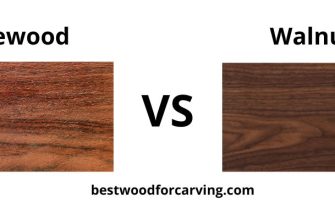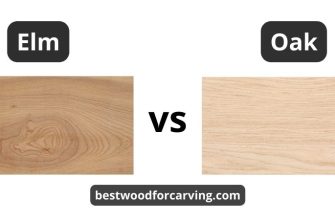Walnut vs. mahogany color and durability Walnut and mahogany are popular for furniture making due to their attractive aesthetics, versatility in design, durability, workability for craftsmen, longevity, availability, and market demand.
In the realm of furniture craftsmanship, the choice between mahogany vs. walnut is pivotal, influencing both the aesthetics and durability of fine furniture and outdoor projects.
![Walnut vs. Mahogany color and durability! [5 pointers] walnut vs. mahogany color](https://bestwoodforcarving.com/wp-content/uploads/2023/12/aidcoffeemake-8.jpg)
- Factor 1: mahogany vs. walnut wood color
- Comparative analysis: mahogany vs. walnut wood
- Factor 2: aesthetics of mahogany vs. walnut wood
- Comparing the visual appeal of mahogany and walnut wood
- Walnut wood color
- Mahogany wood color
- Comparative analysis: mahogany vs. walnut wood
- Factor 3: durability – mahogany vs. walnut wood
- Resilience to wear and tear
- Comparative analysis: mahogany vs. walnut
- Maintenance and care differences
- Special considerations
- Comparative analysis: mahogany vs. walnut wood
- Factor 4: complementary uses of mahogany vs. walnut wood
- Complementary pairing
- Design flexibility
- Factor 5: cost factors for mahogany vs. walnut wood
- Cost considerations: mahogany vs. walnut
- Consumer choice
- Conclusion
- FAQ
- Is mahogany and walnut the same color?
- Which stain is darker walnut or mahogany?
- Can you make mahogany look like walnut?
- What wood color is similar to walnut?
Factor 1: mahogany vs. walnut wood color
Walnut tree:
- Rich hues: the walnut tree encompasses a spectrum of rich, earthy tones, ranging from lighter brown shades to dark brown hues resembling chocolate.
- Variety in color: the color spectrum of walnut wood includes variations such as light sapwood and dark heartwood, offering a diverse palette for furniture makers.
- Aging process: with time and exposure to light, walnut lumber tends to mellow and darken, developing a more pronounced depth in its colors while maintaining its characteristic warmth.
Mahogany wood:
- Reddish-brown hue: mahogany tree, originating from Central and South America, typically features a reddish-brown hue, often presenting a warmer and deeper coloration compared to many other wood types.
- Maturity and darkening: over time, mahogany tends to mature and deepen in color, further enhancing its rich, reddish brown color and a straight grain pattern.
- Patina development: mahogany develops a distinguished patina with age and exposure, adding to its elegance and sophistication in furniture pieces.
Comparative analysis: mahogany vs. walnut wood
Both mahogany and walnut offer a wide array of color variations and attractive grain patterns that contribute to the distinctive aesthetics of fine furniture crafted from these woods.
While walnut lumber presents a range of brown shades with unique grain patterns, the rich reddish brown color of mahogany ages gracefully, adding a touch of sophistication and depth to woodworking projects over time.
The choice between mahogany and walnut wood species often involves considering the desired color palette and how these hues complement the overall design and ambiance of the furniture or space.
![Walnut vs. Mahogany color and durability! [5 pointers] aidcoffeemake 9](https://bestwoodforcarving.com/wp-content/uploads/2023/12/aidcoffeemake-9.jpg)
Factor 2: aesthetics of mahogany vs. walnut wood
Exploring the nuanced differences in their aesthetic qualities illuminates the diverse possibilities and preferences that inform the selection between walnut and mahogany in furniture design and decor.
Comparing the visual appeal of mahogany and walnut wood
Walnut and mahogany wood possess distinct visual characteristics that significantly impact their aesthetic appeal in furniture making.
Understanding these differences aids designers, craftsmen, and consumers in making informed choices about which wood suits their woodworking projects.
Walnut wood color
- Rich, dark hues ranging from lighter brown to darker chocolate.
- Prominent, varied grain patterns with swirls, knots, and straight lines.
Mahogany wood color
- Mahogany has a reddish-brown color that deepens with exposure to light.
- Mahogany has a straight grain with occasional ribbon-like patterns.
Mahogany has unique aesthetics:
- Traditional elegance: mahogany exudes traditional elegance and sophistication, making it a classic choice for formal and traditional settings.
- Classic designs: mahogany is ideal for furniture pieces in classic designs, such as ornate chairs, tables, and cabinets, to evoke a sense of timeless beauty.
- Colonial style: mahogany is often associated with colonial aesthetics, creating a sense of historical charm and refinement.
- Formal spaces: mahogany enhances the ambiance of formal spaces like dining rooms, interior trim, or offices, adding a touch of grandeur and richness to the decor.
Comparative analysis: mahogany vs. walnut wood
Both mahogany and walnut offer distinct visual appeals in furniture making. Walnut showcases rich, dark hues ranging from light browns to deep chocolates, featuring varied grain patterns such as swirls, knots, and straight lines.
In contrast, mahogany presents reddish-brown tones that deepen over time, typically displaying a more uniform grain with occasional ribbon-like patterns.
While walnut is versatile, fitting into both contemporary and traditional settings, mahogany leans toward classic, formal designs, often associated with elegance and timeless beauty.
Both woods age gracefully, with walnut exhibiting subtle changes while the aging process of mahogany offers a more noticeable transformation, evolving its appearance over time.
Ultimately, the choice between these woods often depends on the desired aesthetic, ranging from the adaptable and varied character of walnut to the classic and refined allure of mahogany.
![Walnut vs. Mahogany color and durability! [5 pointers] aidcoffeemake 10](https://bestwoodforcarving.com/wp-content/uploads/2023/12/aidcoffeemake-10.jpg)
Factor 3: durability – mahogany vs. walnut wood
Comparing walnut and mahogany in terms of their endurance and ability to withstand wear and tear provides valuable insights into their suitability for different woodworking projects.
Resilience to wear and tear
Walnut wood:
- Moderate hardness: walnut is a reasonably strong wood, offering a good level of resistance to dents and scratches.
- Susceptibility to impact: while sturdy, walnut might be more prone to dents compared to harder woods, particularly when subjected to heavy impacts.
Mahogany wood:
- High durability: mahogany is a durable wood and is known for its impressive durability, ranking higher on the hardness scale compared to walnut.
- Natural resistance to damage: the hardness of mahogany provides natural resistance to dents and scratches, making it well-suited for furniture subject to frequent use.
- Stability: mahogany is a durable wood that demonstrates notable stability, showing minimal expansion or contraction with changes in environmental conditions, reducing the risk of warping.
Comparative analysis: mahogany vs. walnut
Both mahogany and walnut offer considerable durability, with mahogany generally known for its superior hardness and resilience against wear and tear.
Walnut is strong wood and presents moderate durability; its stability and resistance to damage make it suitable for furniture making.
In contrast, mahogany is impressively durable wood with a higher hardness level, often ensuring a longer lifespan and better resilience in outdoor furniture subjected to heavy use or impacts.
The choice of durable wood between mahogany and walnut often depends on the specific usage requirements and the expected wear and tear the furniture is likely to endure.
Maintenance and care differences
Walnut wood:
- Finishing: walnut typically responds well to various finishes, including oils, lacquers, or polyurethane, enhancing its natural beauty and offering protection against moisture and stains.
- Regular cleaning: routine dusting and occasional polishing maintain the luster of walnut furniture, ensuring its longevity.
Mahogany wood:
- Finishing requirements: mahogany often demands specific finishes, such as oil-based products or varnishes, to enhance its appearance and safeguard it from environmental elements.
- Cleaning regimen: similar to walnut, regular dusting, and occasional waxing or polishing help maintain the sheen and protect the surface of mahogany.
- Sunlight sensitivity: mahogany is sensitive to light, which may result in color variations. Shielding furniture from direct sunlight or using UV-resistant coatings can help preserve its original color.
Special considerations
Humidity control: both woods benefit from consistent humidity levels. However, mahogany might be more prone to swelling in high-humidity environments compared to walnut.
Scratch resistance: the hardness of mahogany often provides better scratch resistance than walnut, but both woods benefit from the use of protective pads or coasters to prevent scratches and dents.
Comparative analysis: mahogany vs. walnut wood
Understanding the distinctive maintenance needs of walnut and mahogany is crucial for preserving the beauty and integrity of furniture made from these woods.
Regular upkeep, appropriate finishes, and protective measures against environmental factors play significant roles in prolonging the life and aesthetics of furniture crafted from either wood type.
![Walnut vs. Mahogany color and durability! [5 pointers] aidcoffeemake 11](https://bestwoodforcarving.com/wp-content/uploads/2023/12/aidcoffeemake-11.jpg)
Factor 4: complementary uses of mahogany vs. walnut wood
Exploring the complementary roles of walnut and mahogany in furniture design unveils a world of creative possibilities.
Walnut’s rich, dark tones and distinct grain patterns make it ideal for accentuating furniture pieces. It often enhances the visual appeal of coffee tables, sideboards, or statement chairs.
Its versatility allows walnut to seamlessly integrate into modern or minimalist designs, adding warmth and depth to contemporary furniture.
The classic elegance of mahogany often finds its place in traditional furniture designs, such as ornate dining tables, desks, and antique reproduction pieces.
Mahogany complements formal settings, evoking a sense of vintage charm, and suits spaces where historical allure or sophistication is desired.
Complementary pairing
Designers often merge walnut and mahogany in furniture pieces to create contrast or balance. For instance, combining a mahogany table with walnut accents can infuse a touch of modernity into a traditional design, or vice versa.
Design flexibility
While walnut leans towards contemporary styles and mahogany to traditional ones, both woods offer design flexibility. Their ability to complement each other expands the creative scope for furniture designers, enabling eclectic or transitional design combinations both for indoor and outdoor projects.
![Walnut vs. Mahogany color and durability! [5 pointers] aidcoffeemake 12](https://bestwoodforcarving.com/wp-content/uploads/2023/12/aidcoffeemake-12.jpg)
Factor 5: cost factors for mahogany vs. walnut wood
Walnut wood:
- Pricing overview: walnut is generally considered a moderately expensive hardwood, with its cost varying based on factors such as quality, availability, and sourcing.
- Grading impact: higher grades of walnut, showcasing clearer grain patterns and color uniformity, often come at a premium price compared to lower-grade variations.
- Availability influence: regional availability and demand significantly impact the price of walnut, leading to fluctuations based on local markets and international supply chains.
Mahogany wood:
- Price range: mahogany is known for its relative affordability in comparison to some other hardwoods, although prices can vary based on quality and sourcing.
- Quality grades: similar to walnut, higher-quality mahogany, exhibiting more uniform color and fewer imperfections, tends to be priced higher than lower-grade variations.
- Market dynamics: mahogany’s pricing is also subject to market demands, geographical availability, and sustainable sourcing practices, influencing its cost fluctuations.
Cost considerations: mahogany vs. walnut
Comparative pricing: in general, while mahogany is often more budget-friendly than walnut, fluctuations in prices for both kinds of wood are influenced by various factors, including quality, availability, and market demand.
Sustainability impact: the cost of sustainably sourced walnut or mahogany might be higher due to adherence to responsible forestry practices, certifications, or limited availability.
Consumer choice
Balancing cost considerations with desired quality and aesthetics is crucial for both consumers and furniture makers when choosing between walnut and mahogany.
Understanding the pricing dynamics aids in making informed decisions aligned with project requirements.
![Walnut vs. Mahogany color and durability! [5 pointers] aidcoffeemake 13](https://bestwoodforcarving.com/wp-content/uploads/2023/12/aidcoffeemake-13.jpg)
Conclusion
Walnut, with its natural luster and rich spectrum spanning from warm light browns to deep chocolate tones, captivates with its varied grain patterns, adding depth and character to furniture pieces.
In contrast, mahogany’s reddish-brown hues, which deepen over time, exude an innate elegance and warmth, offering a consistent and refined appearance with occasional ribbon-like patterns.
While walnut boasts a diverse range of shades and intricate grain patterns, mahogany’s consistent and deepening reddish-brown tones convey a sense of timeless sophistication.
The choice between walnut and mahogany for indoor and outdoor furniture often hinges on personal preference, desired ambiance, and how their respective colors harmonize with the overall design vision.
FAQ
Is mahogany and walnut the same color?
No, mahogany and walnut are not the same in color.
Mahogany is durable wood from Central and South America that typically exhibits reddish tones that deepen over time, while walnut features a spectrum of rich, dark hues ranging from light brown to dark brown with distinctive grain patterns.
Which stain is darker walnut or mahogany?
Generally, mahogany has a reddish brown color and tends to be darker than walnut when compared to the natural color of the woods.
However, when stained, the darkness of the final color may depend on the specific stain used and the natural characteristics of the wood type.
Can you make mahogany look like walnut?
While it’s challenging to completely alter the inherent color and grain pattern of mahogany to mimic walnut, staining techniques can be employed to approximate the color of walnut.
However, achieving an exact match in color and grain might be difficult due to the fundamental differences between walnut and mahogany.
What wood color is similar to walnut?
Woods like cherry, maple, and some varieties of oak can exhibit colors similar to walnut.
Cherry wood, for instance, often showcases rich reddish-brown tones akin to walnut but with its unique grain pattern.

![Walnut vs. Mahogany color and durability! [5 pointers] Walnut Vs. Mahogany Color: Best Helpful Guide & Top Review](https://bestwoodforcarving.com/wp-content/uploads/2023/12/wood-16-870x400.jpg)








